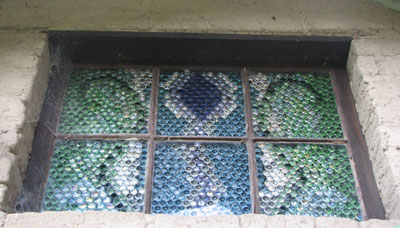This summer is atypically steamy for my altitude (around 1000 metres or 3250 feet) and I am seeing strange phenomena that appear to be related to this new climate.
Not the least of which are these surreal deposits, spotted only in one small area up the hill from my cabin.
Several white blobs stood out amongst the greens and greys. Going closer, I saw that clumps of grass stalks were coated – or being coated?– with a sort of slime, translucently white, soft, yet firm enough to hold shape, some still dripping.
‘Ectoplasm’ was my first thought, thinking of the Ghostbusters film. It was immediately dismissed of course.
But had these rather disturbing gobs come from above, been dropped or spat? Or were they oozing up the stalks from the leaf litter below?
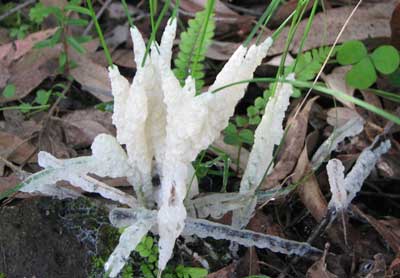
Then I noticed that a nearby stone bore an equally strange blob of speckled grey slime.
Half a metre away, a twig was smothered in what appeared to be a combination one, white on grey.
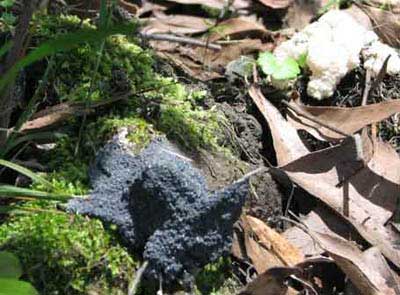
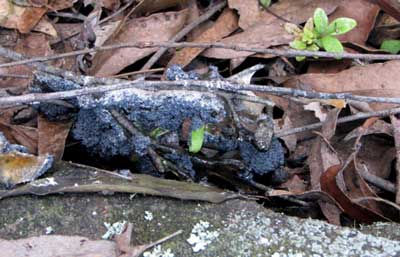
They all had to be some sort of spore.
The grey one was tough and rubbery to the touch, the white felt like powdercoated soft jelly.
Grass stalks collapsed under the latter’s weight as the day heated up, the powder darkened to cream.

By next day they were all grey.
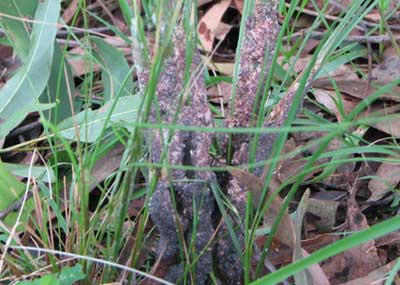
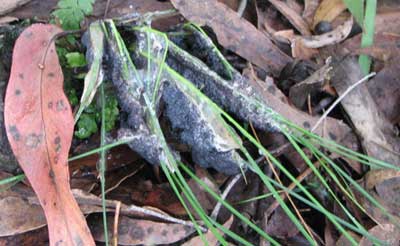
It turns out they are Slime Moulds, from an extraordinary group of organisms called Myxomycetes — neither plant nor animal nor fungi. With more than 1000 species of these ‘intelligent slime’ identified, I am struck that I had not only never seen them (that I am aware of) but had never heard of them.
What a rich world!
Apparently they suddenly get together in a mass of protoplasm and ooze along very, very, very slowly, feeding until ready to start producing spore.
Most are brightly coloured and their forms are vastly varied – one of which has led to it being named ‘dog’s vomit’ slime, since that was the explanation usually given to its appearance.
Check out these sites if you want to get to know slime moulds better:
Great photo gallery
Nice short explanation by a Canadian botanist


 If ever you’re passing through Wollongong (NSW) do stop in at the amazing Nan Tien Buddhist temple just south of the city.
If ever you’re passing through Wollongong (NSW) do stop in at the amazing Nan Tien Buddhist temple just south of the city.
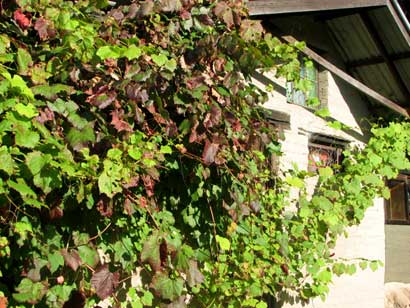
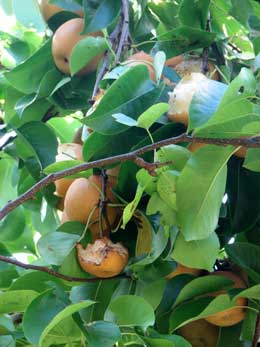 With temperatures veering from 13 to 35 degrees, neither the fauna nor the flora know what’s going on here.
With temperatures veering from 13 to 35 degrees, neither the fauna nor the flora know what’s going on here.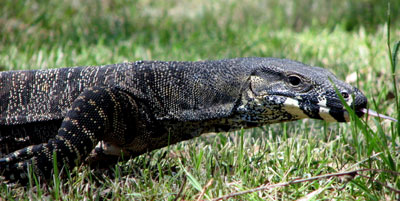
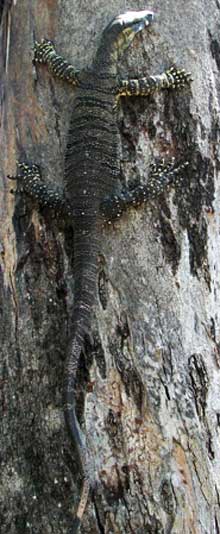 On a recent Goulburn River camping trip, one visitor to the campsite was familiar: a large, long goanna, or Lace Monitor.
On a recent Goulburn River camping trip, one visitor to the campsite was familiar: a large, long goanna, or Lace Monitor.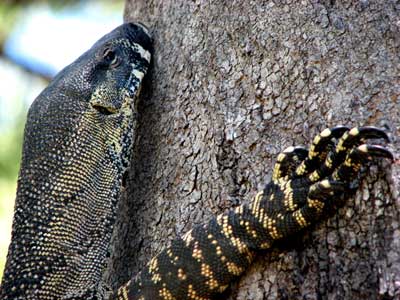
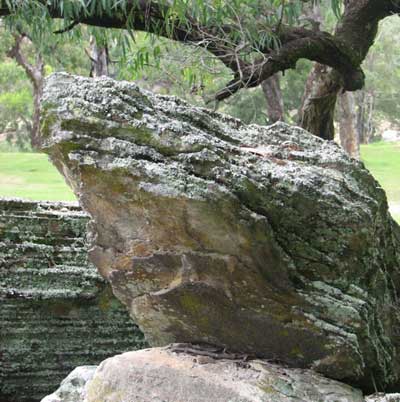
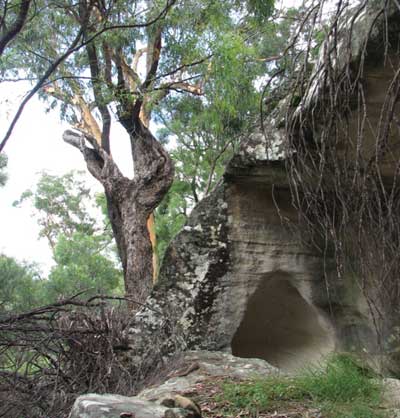
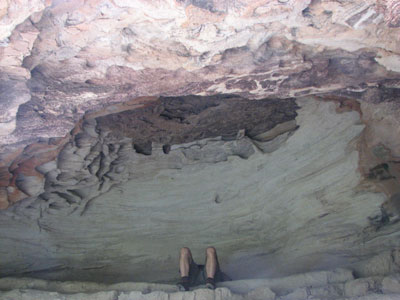



 The Envirowiki website was started in late August, 2006. It’s slowly getting bigger, but it needs your help!
The Envirowiki website was started in late August, 2006. It’s slowly getting bigger, but it needs your help!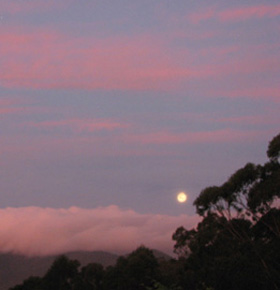
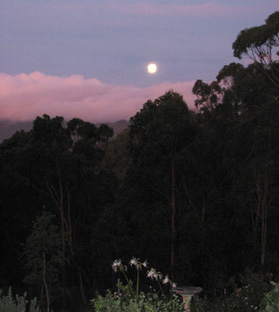
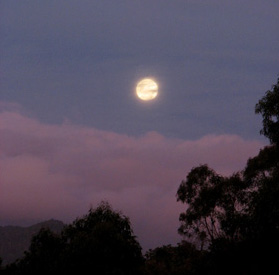
 My last full moon teamed up with the sun for a brief pas de deux between their respective acts.
My last full moon teamed up with the sun for a brief pas de deux between their respective acts.





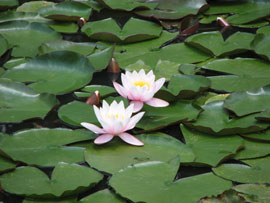
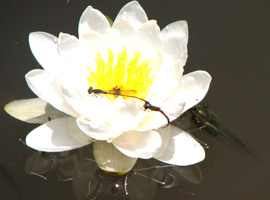
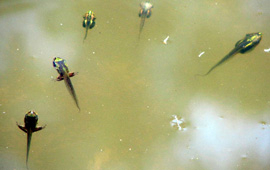
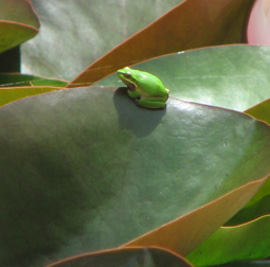
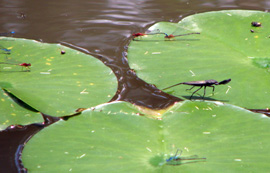
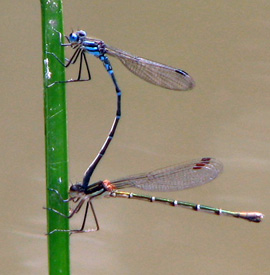 On my small dam the waterlilies are blooming, their large circular leaves so abundant that they are overlapping, curling up at their edges.
On my small dam the waterlilies are blooming, their large circular leaves so abundant that they are overlapping, curling up at their edges.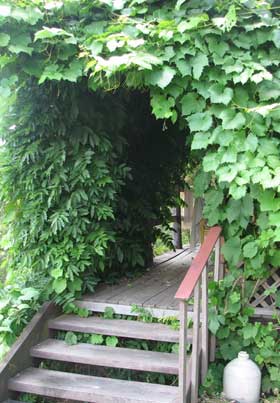 In Autumn the ornamental grape and wisteria vines on my verandah were a visual treat — a rich riot of warm colours.
In Autumn the ornamental grape and wisteria vines on my verandah were a visual treat — a rich riot of warm colours.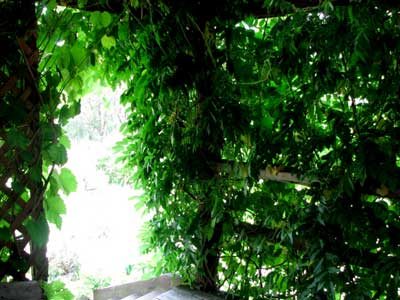
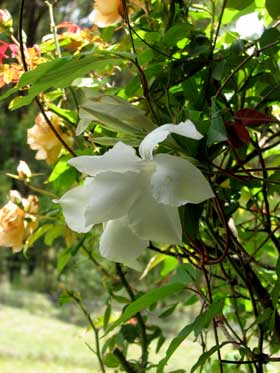 ‘Pray enter a refuge from the glare and heat of summer’, say my front steps, leading to a doorway in the vines.
‘Pray enter a refuge from the glare and heat of summer’, say my front steps, leading to a doorway in the vines.